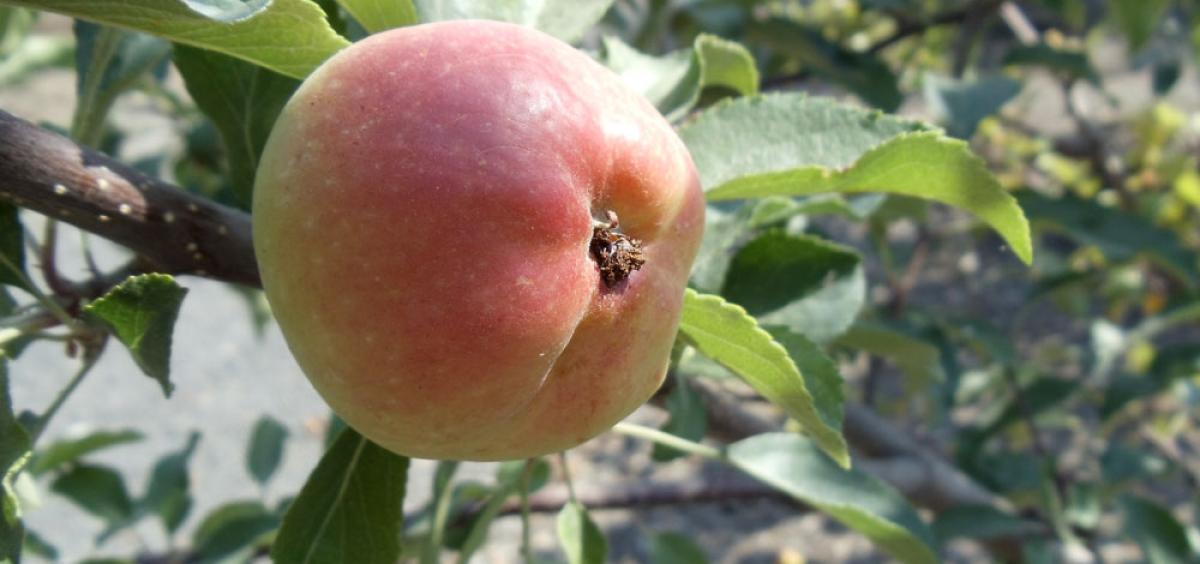
CORVALLIS, Ore. – Wet weather, which is bound to come in the weeks ahead, builds potential for apple scab, a fungal disease of apples.
The apple scab disease fungus overwinters on dead apple leaves and fruit left on the ground, explained Ross Penhallegon, horticulturist for the Oregon State University Extension Service. During spring moisture, scab spores are forcibly discharged and ride air currents to infect developing leaves and fruit of apples. All outer parts of unopened fruit buds are highly susceptible to scab. As the fruit matures it is much less susceptible.
The first visible symptoms of apple scab in the spring are pale, water-soaked spots the size of a pinhead on the new leaves. These spots enlarge, become darker and smoky colored. Later, the spots turn brownish-black color. Spots may be any shape, but tend to be circular, Penhallegon said. Diseased leaves may be curled, distorted and drop off early. Heavy infections can defoliate and weaken your apple trees.
On the fruit, the symptoms of scab include small raised brown or black circular areas (scabs). The skin breaks later in the season and the exposed tissue turns velvety brown or black. As the fruit enlarges, the scab spots become brown and corky. To help control apple scab, Penhallegon recommends:
1. Grow scab-resistant cultivars of apples. Apples with good resistance include Akane, Chehalis, Liberty, Prima and Tydeman Red.
2. Apply nitrogen to leaves that have fallen to the ground in the fall to enhance decomposition of fallen leaves and make them more palatable to earthworms. Hand apply a liquid fish solution or 16-16-16 fertilizer to help with the decomposition.
3. Shred fallen leaves in the fall with a mower to help speed up decomposition.
4. Prune your apple trees to open up branching and allow more air circulation.
5. When watering your apple trees, avoid getting foliage wet.
6. Apply dolomitic lime in the fall, after leaf drop, to increase pH and to help reduce fungal spores in the spring.
7. Spray fungicide – Bonide Captan, wettable sulfur, summer lime sulfur or Spectracide Immunox – when temperatures are above 60 degrees and the leaves or blooms are wet.
For more information, consult the Extension publication on Apple Scab.
About the OSU Extension Service: The Oregon State University Extension Service shares research-based knowledge with people and communities in Oregon’s 36 counties. OSU Extension addresses issues that matter to urban and rural Oregonians. OSU Extension’s partnerships and programs contribute to a healthy, prosperous and sustainable future for Oregon.
Kym Pokorny, 541-737-3380, [email protected]
Ross Penhallegon, 541-344-1709, [email protected]
Click photos to see a full-size version. Right click and save image to download.